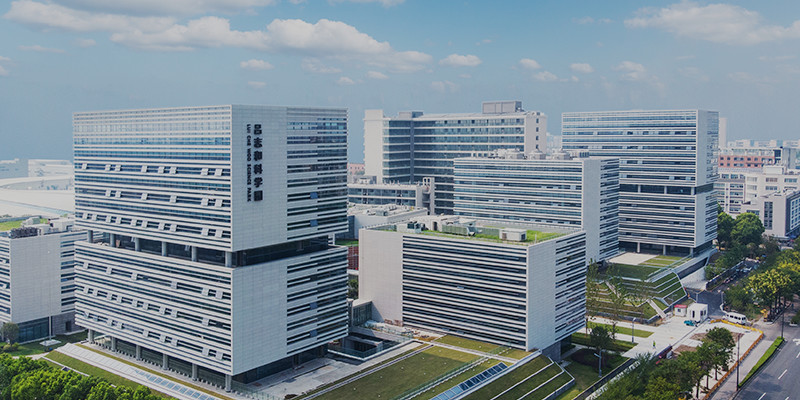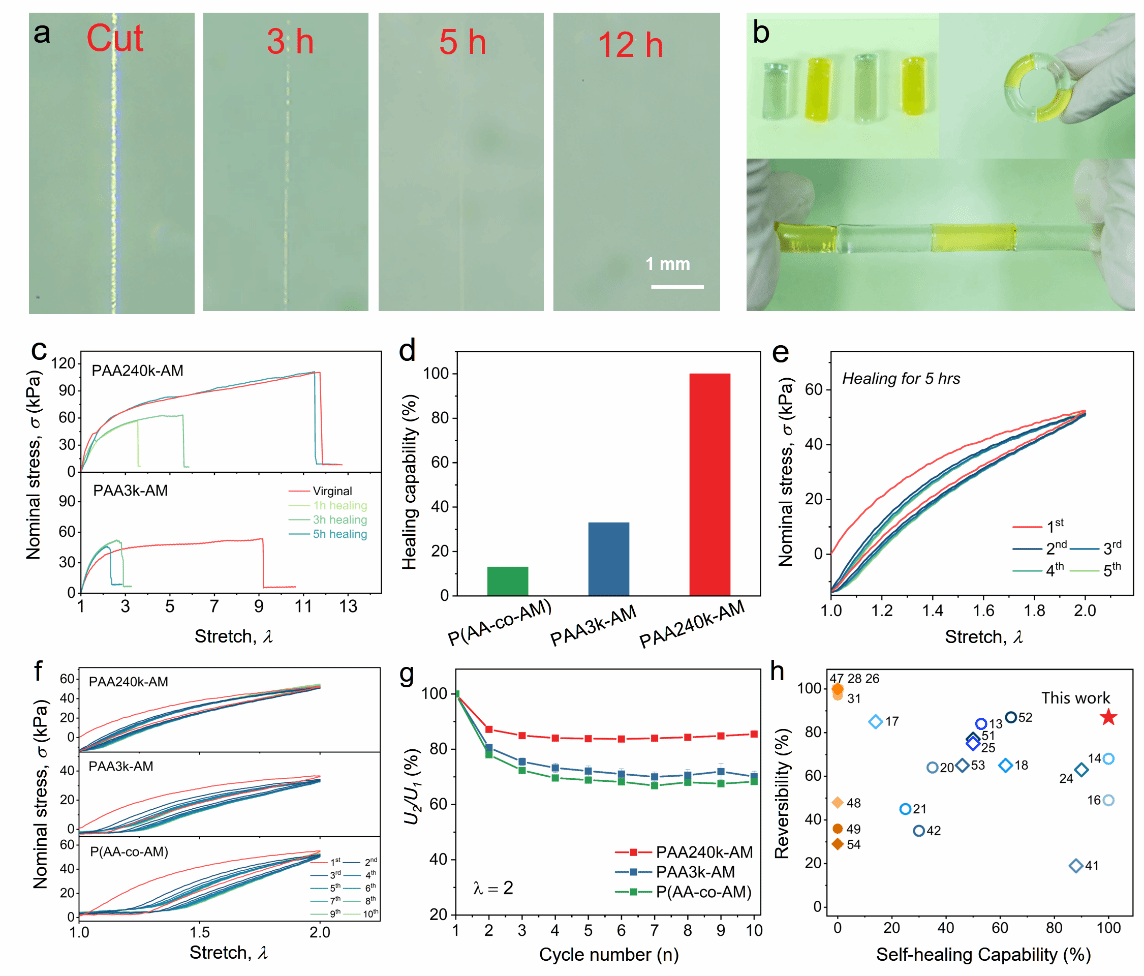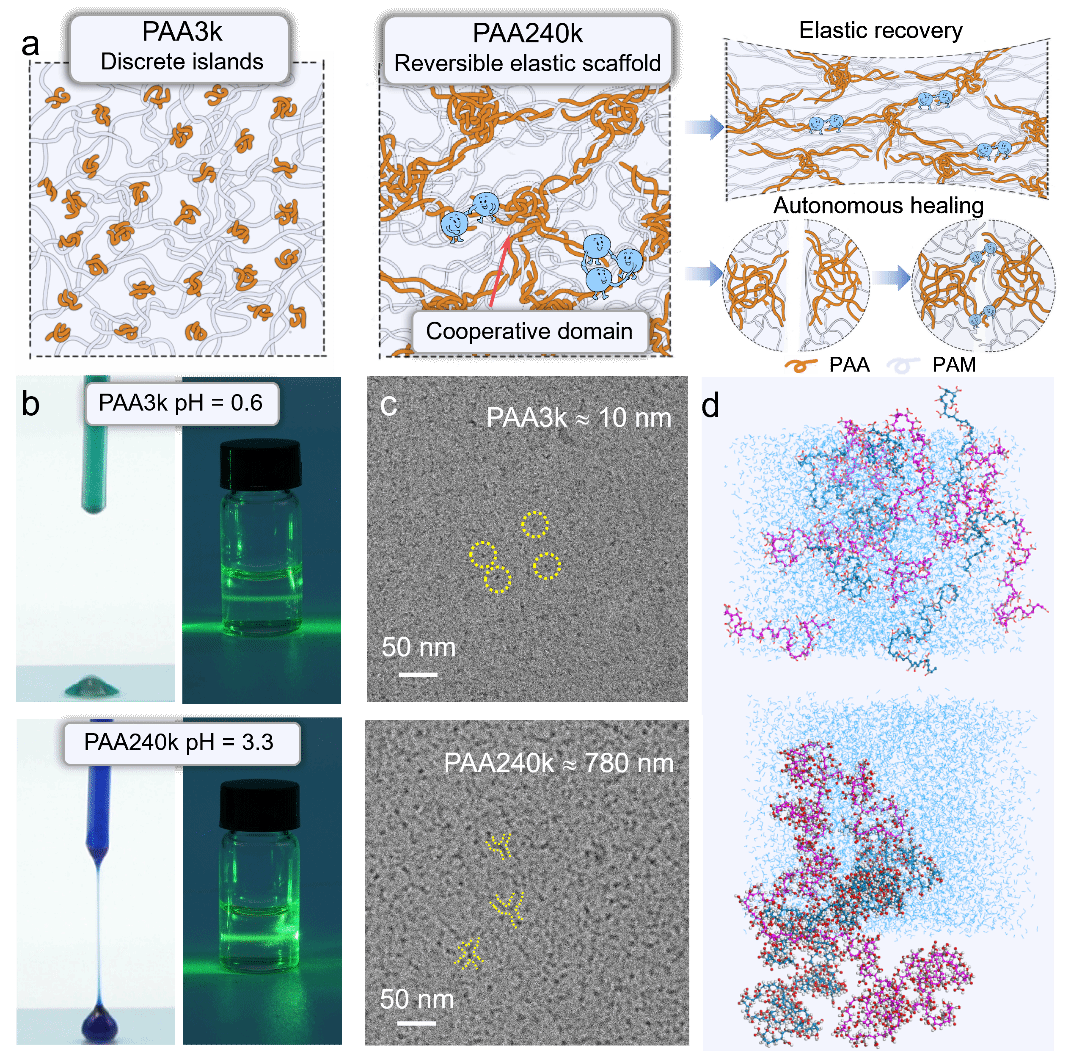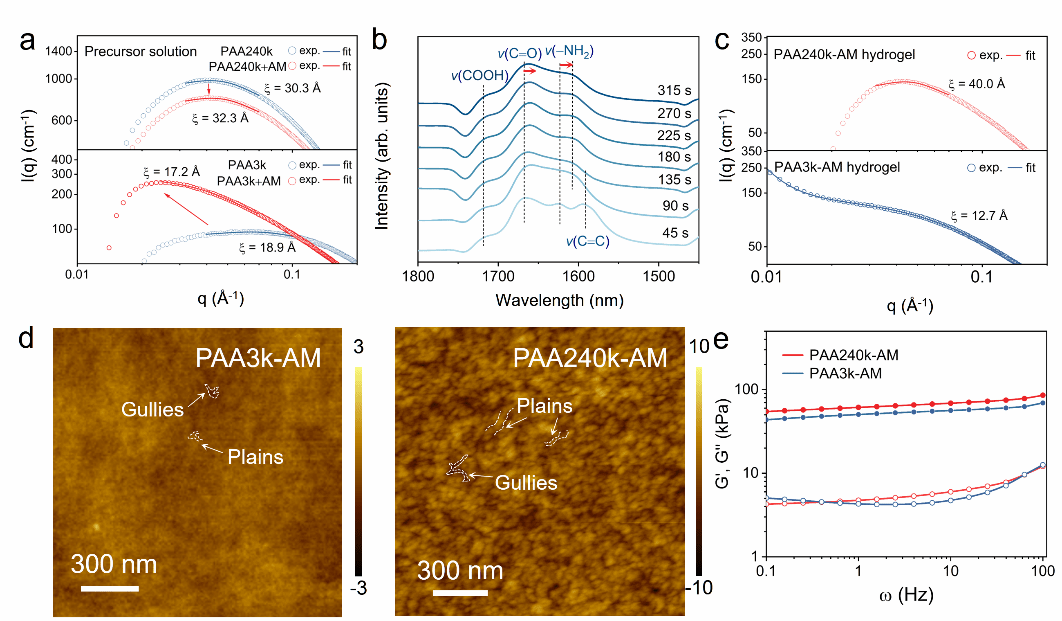搜索


Recently, Nature Communications published online the latest research by Professor Fuqiang Huang’s team at the Future Materials Creation Center of Zhangjiang Institute for Advanced Study, Shanghai Jiao Tong University, titled
“Observation of Topological Hydrogen-bonding Domains in Physical Hydrogel for Excellent Self-Healing and Elasticity”.The study reports a dual-network hydrogel (PAA240k-AM), which employs the topological structure of polyacrylic acid (PAA) colloids to assemble a dual-network system and constructs locally reversible elastic synergistic hydrogen-bonding domains within a non-cooperative hydrogen-bonding matrix. Only when the interconnected cooperative domains formed by high-molecular-weight PAA exist can the hydrogel achieve complete self-healing at room temperature and exhibit excellent elasticity under continuous loading.
Hydrogels are water-rich three-dimensional polymer networks that have attracted widespread attention in wearable devices, human–machine interfaces, robotics, and other fields due to their biocompatibility and multifunctionality.In such applications, hydrogels with both self-healing and high elasticity offer distinct advantages: the former can repair mechanical damage, while the latter extends service life.Currently, the self-healing ability of hydrogels is typically achieved through dynamic bond reconstruction via directed self-assembly strategies.However, high-strength bonding consumes large amounts of energy (e.g., light or heat) and requires long timescales to reach thermodynamic stability.Such reversible polymer networks are prone to breaking under prolonged tension and cannot recover in time, resulting in significant residual strain and thus elasticity decay.Although dual-network hydrogels introduce a secondary polymer network to stabilize the assembled structure, their self-healing and elasticity remain insufficient.
To address this issue, Prof. Huang’s team at SJTU, in collaboration with Prof. Wei Liu’s group at ShanghaiTech University, assembled dual-network hydrogels using PAA-based knot-like colloids that achieve both room-temperature self-healing and high elasticity.Only when interconnected cooperative domains formed by high-molecular-weight PAA exist can the hydrogel achieve ~100% self-healing efficiency within 5 hours at room temperature, and exhibit excellent elasticity under continuous load (<6.3% residual strain, >100% stress retention, >85% reversibility).Moreover, the swollen physical hydrogel maintains 0% residual strain under cyclic loading.



This topological design strategy offers a solid theoretical basis for developing multifunctional hydrogel materials with wide practical application potential.
Conclusion and Outlook
The authors utilized the topological framework of long-chain polyacrylic acid colloids and demonstrated that molecular weight significantly influences the conformation of polyelectrolytes in multicomponent concentrated solutions and gels, leading to major improvements in self-healing performance and elastic mechanics of the resulting dual-network hydrogel.Additionally, this method allows the preparation of elastic physical hydrogels under high water content, providing an important theoretical foundation for multifunctional hydrogel development.The article is published in Nature Communications.The corresponding author is Professor Fuqiang Huang from the School of Materials Science and the Future Materials Creation Center at Zhangjiang Institute for Advanced Study, Shanghai Jiao Tong University.Collaborating institutions include ShanghaiTech University, the Shanghai Institute of Ceramics of the Chinese Academy of Sciences, and the Institute of Biochemistry and Cell Biology of the Chinese Academy of Sciences.The work was funded by the Shanghai Science and Technology Commission and other sources.
Article link: https://doi.org/10.1038/s41467-025-57692-y






 Address:No.1308 Keyuan Road, Pudong District, Shanghai
Address:No.1308 Keyuan Road, Pudong District, Shanghai Phone:86-21-54740000
Phone:86-21-54740000 E-mail:zias@sjtu.edu.cn
E-mail:zias@sjtu.edu.cn